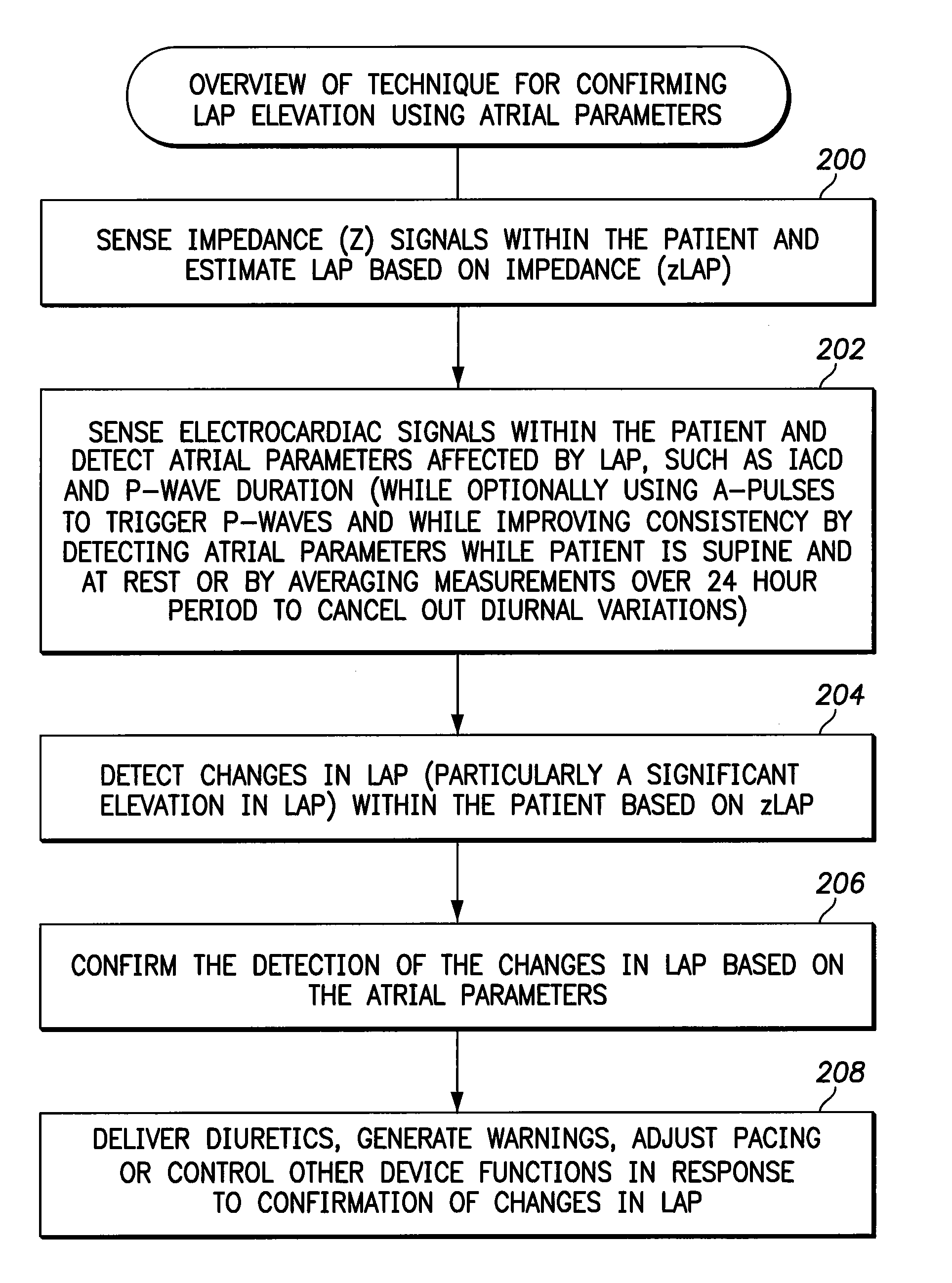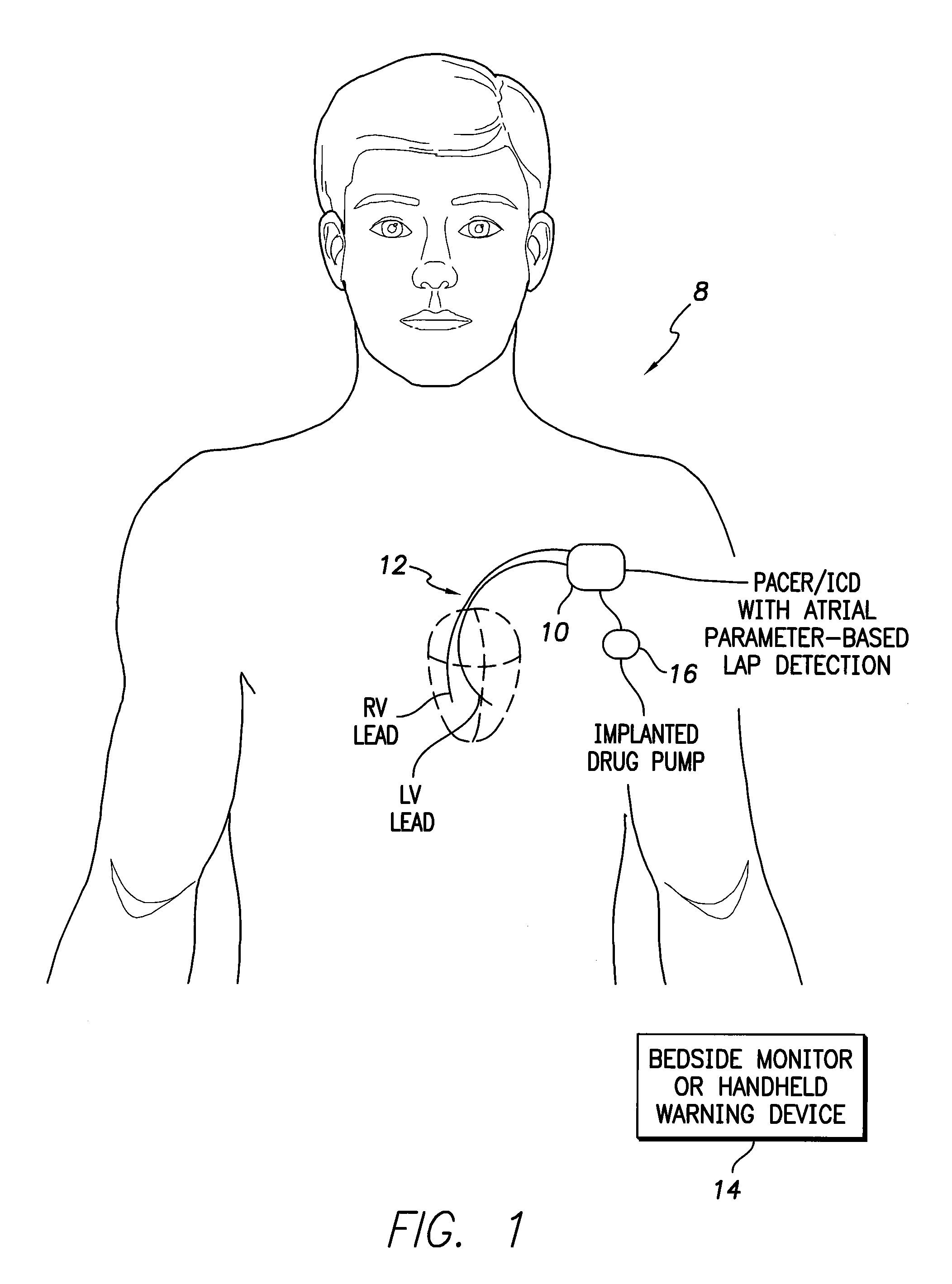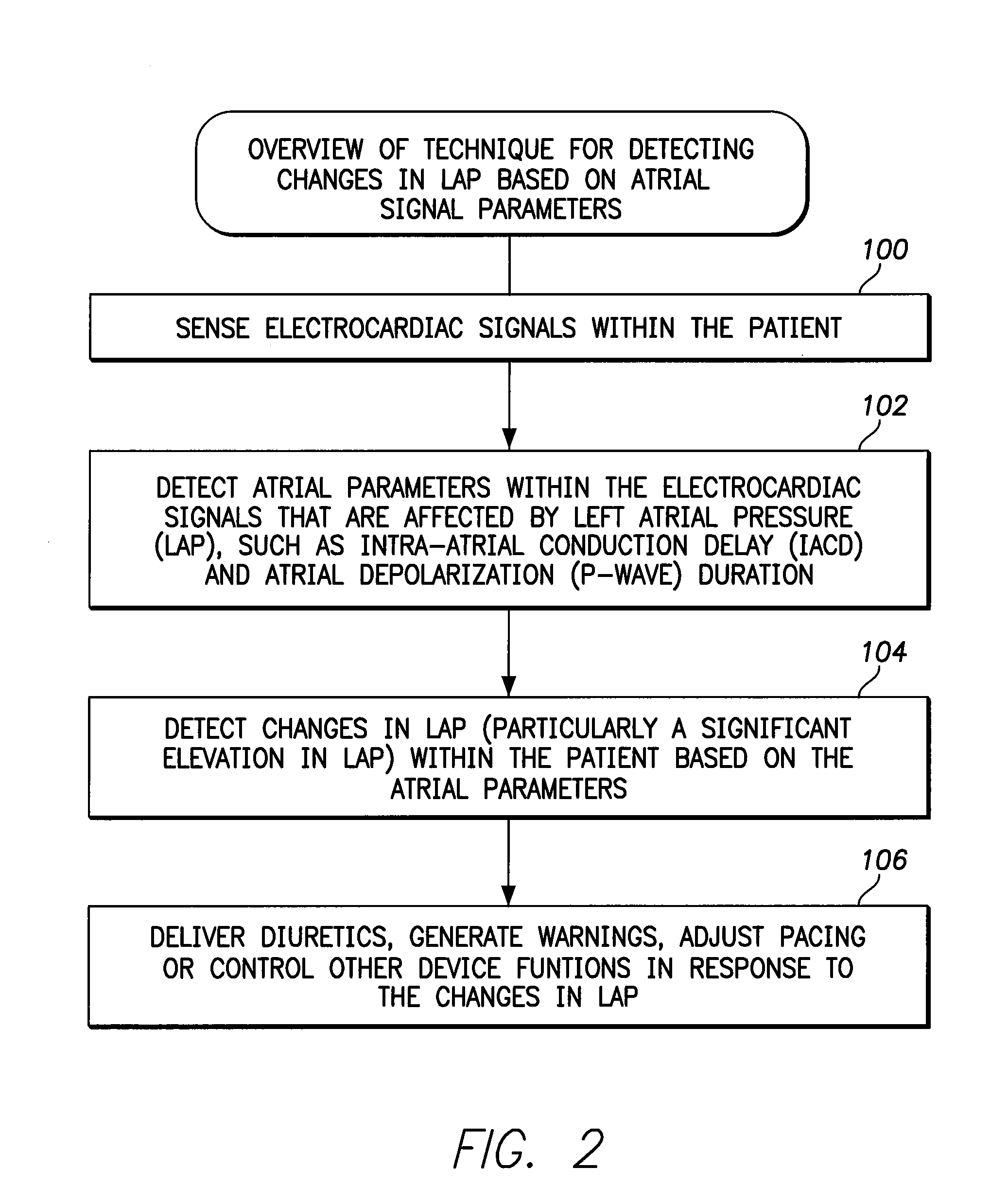System and method for exploiting atrial electrocardiac parameters in assessing left atrial pressure using an implantable medical device
a technology of electrocardiac parameters and medical devices, applied in catheters, angiography, therapy, etc., can solve the problems of inadequate blood flow to meet the needs of tissues, heart failure, and loss of propulsive power, and achieve good estimators of cardiac performan
- Summary
- Abstract
- Description
- Claims
- Application Information
AI Technical Summary
Benefits of technology
Problems solved by technology
Method used
Image
Examples
Embodiment Construction
[0032]The following description includes the best mode presently contemplated for practicing the invention. The description is not to be taken in a limiting sense but is made merely for the purpose of describing the general principles of the invention. The scope of the invention should be ascertained with reference to the issued claims. In the description of the invention that follows, like numerals or reference designators will be used to refer to like parts or elements throughout.
Overview of Implantable Medical System with Pacer / ICD
[0033]FIG. 1 provides a stylized representation of an exemplary implantable medical system 8 capable of detecting atrial electrocardiac parameters within the heart of the patient that are affected by LAP and then detecting changes in LAP based on the parameters. To this end, implantable system 8 includes a pacer / ICD 10 or other cardiac stimulation device that incorporates components for detecting IEGMs using electrodes mounted to a set of sensing / pacing...
PUM
 Login to View More
Login to View More Abstract
Description
Claims
Application Information
 Login to View More
Login to View More - R&D
- Intellectual Property
- Life Sciences
- Materials
- Tech Scout
- Unparalleled Data Quality
- Higher Quality Content
- 60% Fewer Hallucinations
Browse by: Latest US Patents, China's latest patents, Technical Efficacy Thesaurus, Application Domain, Technology Topic, Popular Technical Reports.
© 2025 PatSnap. All rights reserved.Legal|Privacy policy|Modern Slavery Act Transparency Statement|Sitemap|About US| Contact US: help@patsnap.com



